高一英语必修四人教版Unit4 Body language 课件(18张ppt)
文档属性
| 名称 | 高一英语必修四人教版Unit4 Body language 课件(18张ppt) |  | |
| 格式 | pptx | ||
| 文件大小 | 282.3KB | ||
| 资源类型 | 教案 | ||
| 版本资源 | 人教版(新课程标准) | ||
| 科目 | 英语 | ||
| 更新时间 | 2020-11-18 10:05:29 | ||
图片预览

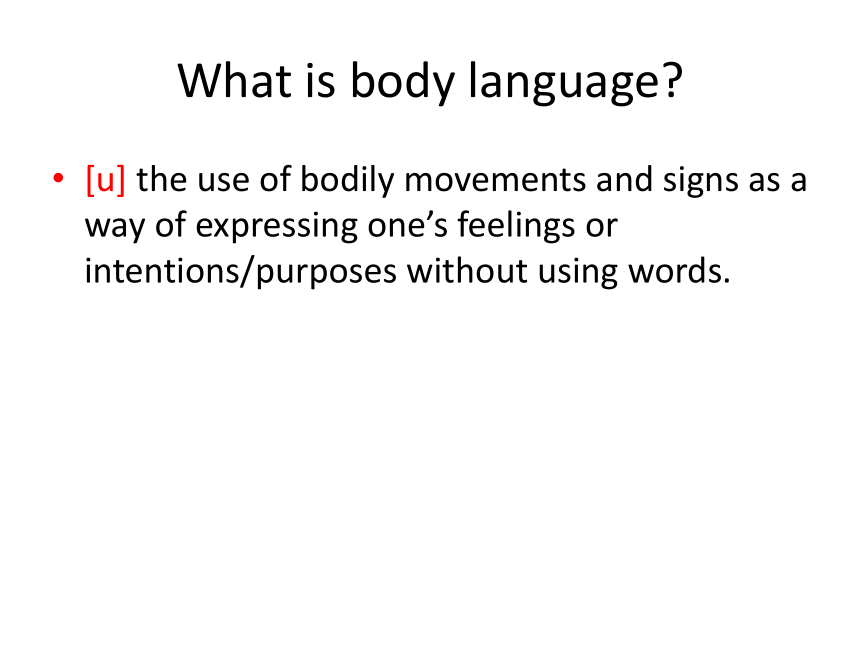
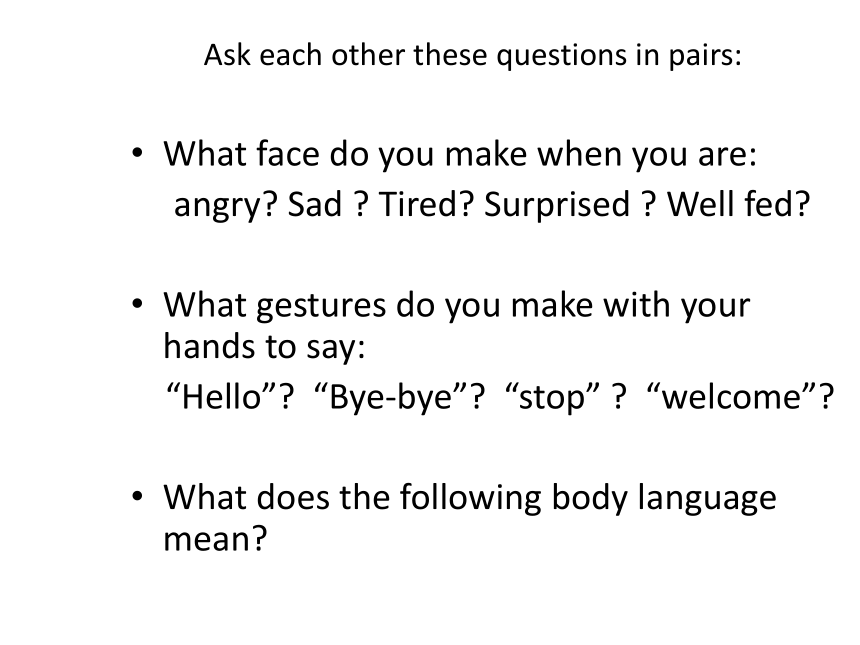
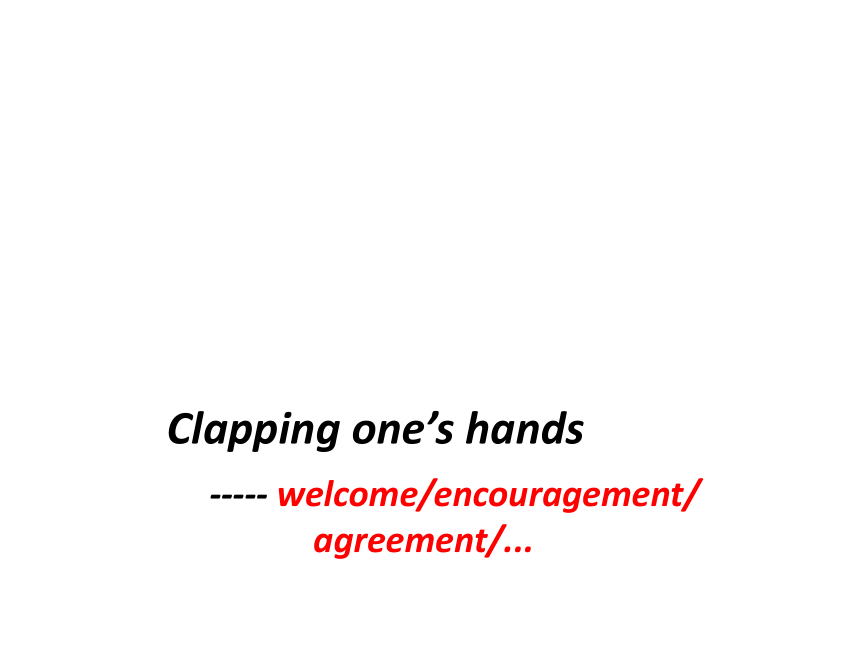
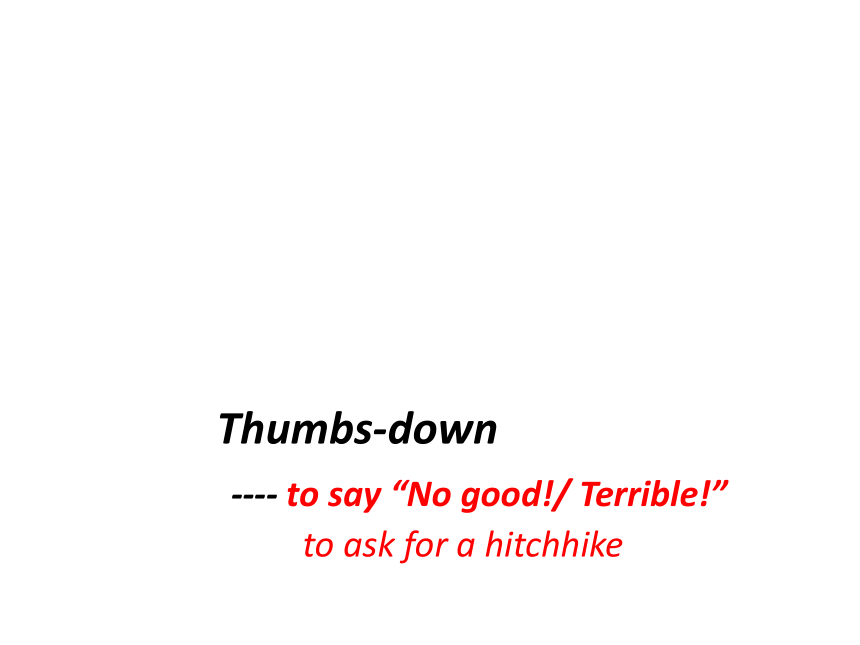
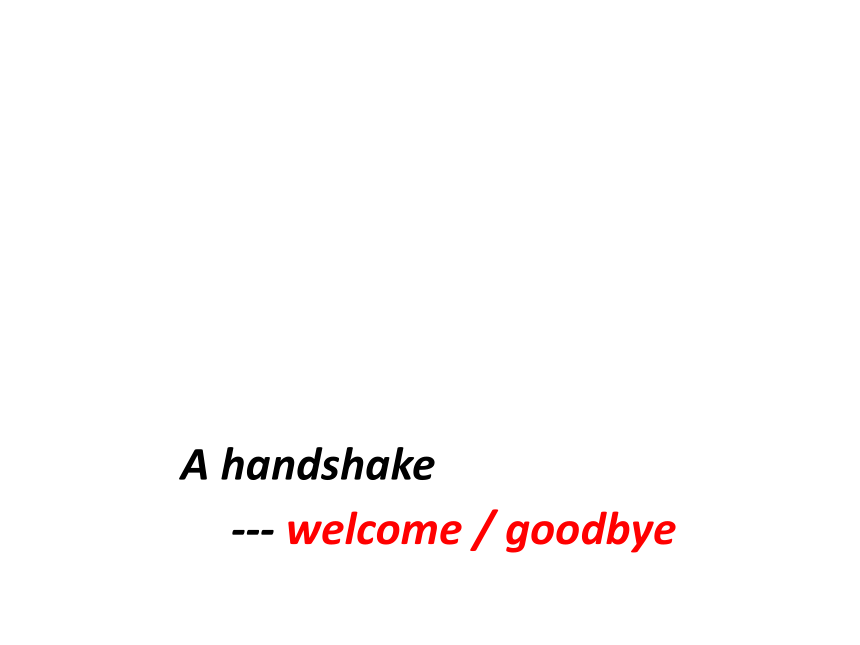
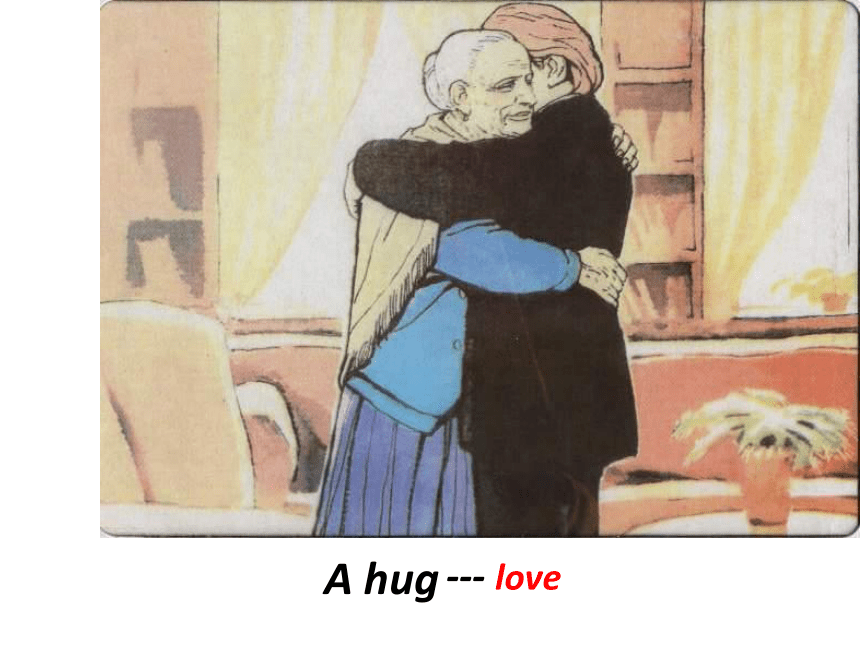
文档简介
Body Language
What is body language?
[u] the use of bodily movements and signs as a way of expressing one’s feelings or intentions/purposes without using words.
Ask each other these questions in pairs:
What face do you make when you are:
angry? Sad ? Tired? Surprised ? Well fed?
What gestures do you make with your hands to say:
“Hello”? “Bye-bye”? “stop” ? “welcome”?
What does the following body language mean?
Clapping one’s hands
----- welcome/encouragement/
agreement/...
Thumbs-down
---- to say “No good!/ Terrible!”
to ask for a hitchhike
A handshake
--- welcome / goodbye
A hug
--- love
Fast reading
Do the Chinese and the British have similar body language?
Yes, they have almost the same body language.
Main idea of each paragraph:
Para 1: We send messages not only by words but also by our expressions and body movements.
Para 2: Not all body language means the same thing in different countries.
Para 3: Different countries have different ways of greeting.
Para 4: People from English-speaking countries do not touch each other very much.
Para 5: Foreigners should follow the customs of the countries they are visiting.
Questions:
Do people send each other messages only by words? What other ways can be used?
2. What expressions or body movements can you find in the text? Do you know the meanings of them?
3. In what countries do men kiss each other when they meet?
Expressions and body movements
a smile and handshake / waving one’s hand /
nodding the head / shaking the head / kissing / touch
In Russia, France, Arab countries and some of the South American countries
4. What do people in China or English-speaking countries often do to each other when they meet?
5. Which nationality likes to touch each other very much, England, France or Puerto Rico?
6. Can you explain the proverb “Do as the Romans do”?
Shake hands with each other
Puerto Rico
Foreigners should follow the customs of the country they are visiting.
Is there anything wrong in the pictures?
In parts of Asia you must not sit with your feet
pointing at another person.
In Arab countries, you eat using the fingers of
your right hand; the left hand is not used at all.
Classroom activity
What do they mean?
Work in groups of four , trying to find out more gestures we haven’t mentioned, and then choose one to present your gestures.
Language points:
make oneself done
while: 表对比
accept . . . As: 认为. . .是 , 接受. . .作为
take. . . for example
it’s the custom to. . . 形式主语
English-speaking countries
shake hands with sb.
Kiss each other hello/goodbye
do research on /in /into sth.
With+n. +doing: 表伴随
Fill in the blanks with proper words:
Body language is used by people for ________ messages to each other. It can help you make _________ easily understood. When you are ______ with others, you are not just ______ words, but also using __________ and gestures. For example, waving one’s hand ___ to say “Goodbye”. ________ hands means welcome, and clapping hands _______ congratulations. ________ the head means agreement, ______ shaking the head means ____________. The gestures are ________ both by Chinese and foreigners ___ having the same meanings.
Different countries ______ different body language. For ________, men in Russia, France and Arab countries _____ each other when they ______, but men in China or _______________ countries shake hands instead of ______ .people in Puerto Rico like _________ each other, but people in Britain do ____ touch each other very much. When you use a foreigner ________, it is important to know the ________ of gestures and movements in the foreign country. Following the _______ will help you make your stay there much more pleasant and comfortable.
sending
yourself
talking
using
expressions
is
Shaking
means
Nodding
while
disagreement
accepted
as
have
example
kiss
meet
English-speaking
kissing
touching
not
language
meanings
customs
Homework:
Finish off the workbook exercises.
Recite the passage.
Preview lesson 11.
angry
sorrowful
scornful
happy
sad
shocked
expression: a look on a person’s face
BACK
What is body language?
[u] the use of bodily movements and signs as a way of expressing one’s feelings or intentions/purposes without using words.
Ask each other these questions in pairs:
What face do you make when you are:
angry? Sad ? Tired? Surprised ? Well fed?
What gestures do you make with your hands to say:
“Hello”? “Bye-bye”? “stop” ? “welcome”?
What does the following body language mean?
Clapping one’s hands
----- welcome/encouragement/
agreement/...
Thumbs-down
---- to say “No good!/ Terrible!”
to ask for a hitchhike
A handshake
--- welcome / goodbye
A hug
--- love
Fast reading
Do the Chinese and the British have similar body language?
Yes, they have almost the same body language.
Main idea of each paragraph:
Para 1: We send messages not only by words but also by our expressions and body movements.
Para 2: Not all body language means the same thing in different countries.
Para 3: Different countries have different ways of greeting.
Para 4: People from English-speaking countries do not touch each other very much.
Para 5: Foreigners should follow the customs of the countries they are visiting.
Questions:
Do people send each other messages only by words? What other ways can be used?
2. What expressions or body movements can you find in the text? Do you know the meanings of them?
3. In what countries do men kiss each other when they meet?
Expressions and body movements
a smile and handshake / waving one’s hand /
nodding the head / shaking the head / kissing / touch
In Russia, France, Arab countries and some of the South American countries
4. What do people in China or English-speaking countries often do to each other when they meet?
5. Which nationality likes to touch each other very much, England, France or Puerto Rico?
6. Can you explain the proverb “Do as the Romans do”?
Shake hands with each other
Puerto Rico
Foreigners should follow the customs of the country they are visiting.
Is there anything wrong in the pictures?
In parts of Asia you must not sit with your feet
pointing at another person.
In Arab countries, you eat using the fingers of
your right hand; the left hand is not used at all.
Classroom activity
What do they mean?
Work in groups of four , trying to find out more gestures we haven’t mentioned, and then choose one to present your gestures.
Language points:
make oneself done
while: 表对比
accept . . . As: 认为. . .是 , 接受. . .作为
take. . . for example
it’s the custom to. . . 形式主语
English-speaking countries
shake hands with sb.
Kiss each other hello/goodbye
do research on /in /into sth.
With+n. +doing: 表伴随
Fill in the blanks with proper words:
Body language is used by people for ________ messages to each other. It can help you make _________ easily understood. When you are ______ with others, you are not just ______ words, but also using __________ and gestures. For example, waving one’s hand ___ to say “Goodbye”. ________ hands means welcome, and clapping hands _______ congratulations. ________ the head means agreement, ______ shaking the head means ____________. The gestures are ________ both by Chinese and foreigners ___ having the same meanings.
Different countries ______ different body language. For ________, men in Russia, France and Arab countries _____ each other when they ______, but men in China or _______________ countries shake hands instead of ______ .people in Puerto Rico like _________ each other, but people in Britain do ____ touch each other very much. When you use a foreigner ________, it is important to know the ________ of gestures and movements in the foreign country. Following the _______ will help you make your stay there much more pleasant and comfortable.
sending
yourself
talking
using
expressions
is
Shaking
means
Nodding
while
disagreement
accepted
as
have
example
kiss
meet
English-speaking
kissing
touching
not
language
meanings
customs
Homework:
Finish off the workbook exercises.
Recite the passage.
Preview lesson 11.
angry
sorrowful
scornful
happy
sad
shocked
expression: a look on a person’s face
BACK
同课章节目录
